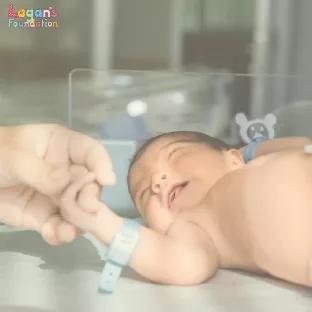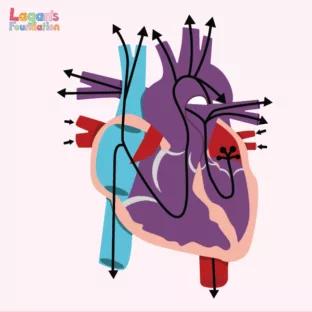Complications of Ventricular Septal Defects (VSD) in Children
Ventricular Septal Defects in children can be treated, but if left untreated, they can have serious complications - most treatments however, are successful.
A Ventricular Septal Defect is a birth defect of the heart in the wall that separates the lower chambers of the heart. They are the most common type of congenital heart defect and are usually treated successfully without any complications.

Key Points:
- Ventricular Septal Defects are the most common congenital heart defect in children.
- Most small Ventricular Septal Defects will close on their own without the need for treatment or surgery.
- Untreated, larger Ventricular Septal Defects can cause complications such as heart failure as your child grows.
What is the life expectancy of a child with a Ventricular Septal Defect?
Most children with a repaired Ventricular Septal Defect have the same life expectancy as someone who doesn’t have one. This is especially the case if the hole closes on its own. However, for those with a large Ventricular Septal Defect, even one which has been repaired, are more likely to have a lower life expectancy. This is especially the case if the defect was not repaired early.
The size of the Ventricular Septal Defect has a major effect on a person’s life expectancy:
- Small Ventricular Septal Defects – Small defects are unlikely to have a major impact on your life. It is estimated that 96% of people with an unrepaired small defect will live more than 25 years after diagnosis.
- Moderate Ventricular Septal Defects – Survival rates for those with a moderate unrepaired defect is slightly lower, with around 86% of those people living more than 25 years after diagnosis.
- Large Ventricular Septal Defects – Survival rates for those with large unrepaired defects are much lower. Only about 61% of these individuals will live more than 25 years after their diagnosis.
Do Ventricular Septal Defects affect a child’s development?
Generally speaking, the effect on a child’s development will depend on the size of the Ventricular Septal Defect. Small defects do not cause symptoms in infancy or early childhood, and will rarely require medical treatment.
Infants with large Ventricular Septal Defects can develop heart failure, and may have issues with feeding too. This can result in poor weight gain and stunted growth. They may also suffer from regular chest infections and breathing difficulties.
Some children may suffer from endocarditis. This is an infection in the inner surface of the heart caused by bacteria in the bloodstream. Good oral hygiene can help to prevent the chances of a child with a Ventricular Septal Defect from developing endocarditis. This is because the mouth is where a lot of bacteria enters our body.
What are the complications of Ventricular Septal Defects in children?
As mentioned, a small Ventricular Septal Defect may never cause any complications. However, some moderate to large Ventricular Septal Defects can cause life threatening complications.
These complications can include:
- Heart failure – In a heart with a moderate to large Ventricular Septal Defect, the heart works harder and the lungs end up with too much blood being pumped to them. Without the correct treatment, this can result in heart failure.
- Eisenmenger syndrome – Unrepaired holes in the heart can result in this complication. Irregular blood flow causes the blood vessels to become stiff and narrow and blood pressure rises in the lungs arteries.
- Endocarditis – This is a rare condition of a Ventricular Septal Defect in which an infection causes life threatening inflammation of the heart’s chambers and valves.
- Arrhythmia – This is an abnormal heart rhythm, which causes the heart to beat too slowly, too quickly or in an irregular way.

What happens if a Ventricular Septal Defect is left untreated?
Over time, if a Ventricular Septal Defect is not treated, it can increase the risk of other complications such as high blood pressure, heart failure, arrhythmia and potentially a stroke.
If heart failure develops as a result of the heart muscles weakening, medical treatment can be given to help the heart pump better and control blood pressure.
What is the long term outlook of Ventricular Septal Defects in children?
Smaller Ventricular Septal Defects will usually close on their own and rarely cause long term side effects. However, depending on the location of the hole, lifelong follow-ups may be required.
Unrepaired moderate to large Ventricular Septal Defects can cause some problems. First, infants may have ongoing symptoms of congestive heart failure. Infants who suffer from this can have poor brain development during the first few years of their life. This is the period of rapid brain development and so it is vital your infant receives good nutrition.
Secondly, as the lungs are exposed to excessive pressure and flow over a period of years, the vessels may react by developing thicker walls. Pressure in the lungs will then increase as a result.
If a large Ventricular Septal Defect is diagnosed and managed appropriately, a child with the condition can live a long, healthy life.
For help or advice on the topic discussed, please contact the team on 01204 800300 or email info@lagans.org.uk.
Help our families by supporting a care worker today. Just click on the button below to donate!

![Understanding Total Anomalous Pulmonary Venous Return [TAPVR]](/wp-content/uploads/2025/04/Understanding-Total-Anomalous-Pulmonary-Venous-Return-FI-312x312-c-default.jpg)


